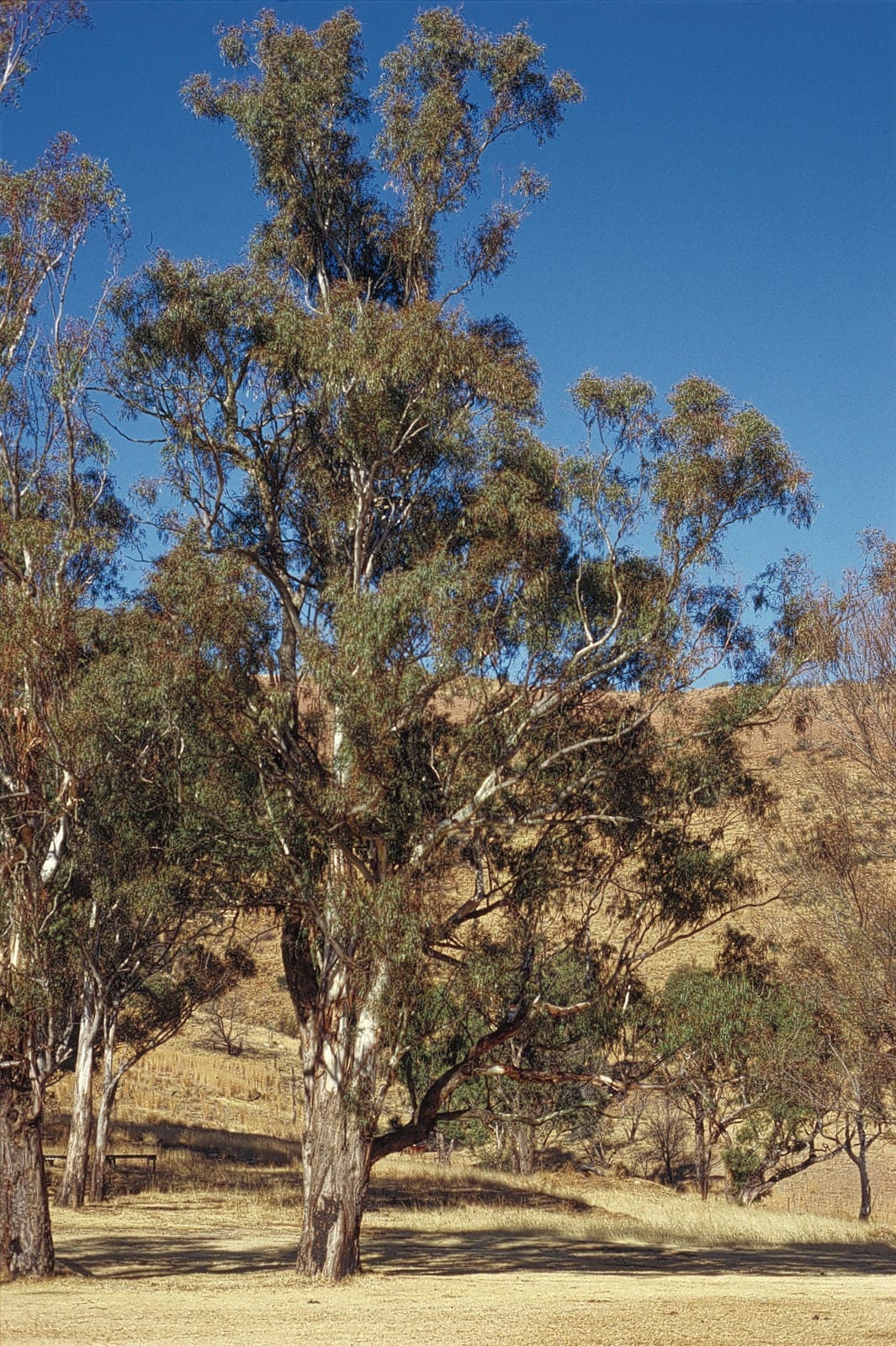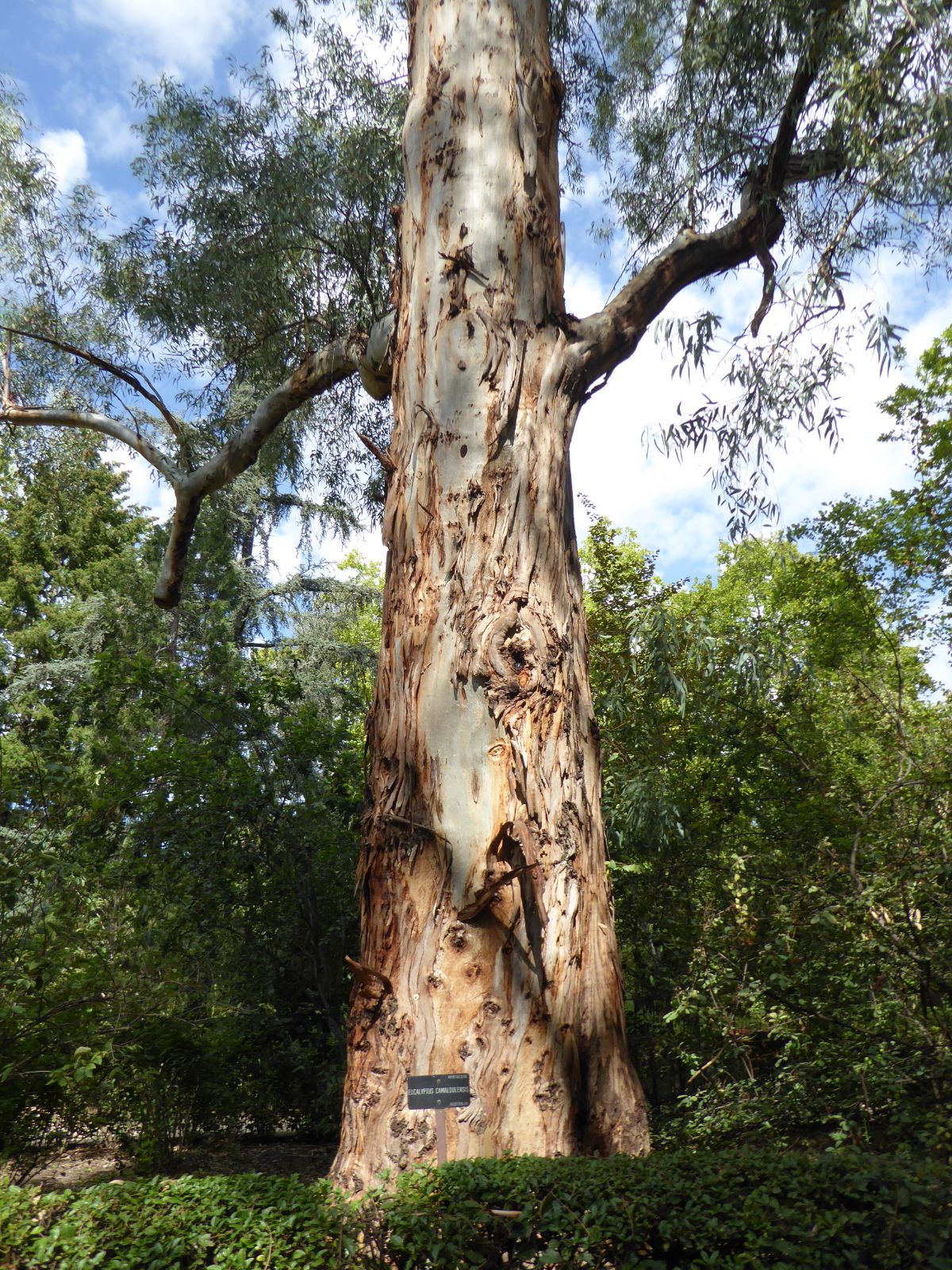Eucalyptus camaldulensis
Credits
Article from New Trees by John Grimshaw & Ross Bayton
Recommended citation
'Eucalyptus camaldulensis' from the website Trees and Shrubs Online (treesandshrubsonline.
Genus
Common Names
- River Red Gum
Other taxa in genus
- Eucalyptus acaciiformis
- Eucalyptus albida
- Eucalyptus amygdalina
- Eucalyptus archeri
- Eucalyptus blakelyi
- Eucalyptus bridgesiana
- Eucalyptus brookeriana
- Eucalyptus camphora
- Eucalyptus chapmaniana
- Eucalyptus cinerea
- Eucalyptus coccifera
- Eucalyptus cordata
- Eucalyptus crenulata
- Eucalyptus cypellocarpa
- Eucalyptus dalrympleana
- Eucalyptus delegatensis
- Eucalyptus elliptica
- Eucalyptus fastigata
- Eucalyptus fraxinoides
- Eucalyptus globulus
- Eucalyptus gregsoniana
- Eucalyptus gunnii
- Eucalyptus johnstonii
- Eucalyptus kybeanensis
- Eucalyptus lacrimans
- Eucalyptus laophila
- Eucalyptus leucoxylon
- Eucalyptus macarthurii
- Eucalyptus macrorhyncha
- Eucalyptus mannifera
- Eucalyptus melliodora
- Eucalyptus mitchelliana
- Eucalyptus moorei
- Eucalyptus morrisbyi
- Eucalyptus neglecta
- Eucalyptus nicholii
- Eucalyptus nitens
- Eucalyptus nova-anglica
- Eucalyptus obliqua
- Eucalyptus oreades
- Eucalyptus ovata
- Eucalyptus parvula
- Eucalyptus pauciflora
- Eucalyptus praecox
- Eucalyptus radiata
- Eucalyptus regnans
- Eucalyptus remota
- Eucalyptus risdonii
- Eucalyptus rodwayi
- Eucalyptus rubida
- Eucalyptus saligna
- Eucalyptus sideroxylon
- Eucalyptus stellulata
- Eucalyptus subcrenulata
- Eucalyptus tenuiramis
- Eucalyptus urnigera
- Eucalyptus viminalis
Tree to 30(–45) m. Bark white, grey, brown or red, smooth throughout. Branchlets green. Juvenile leaves green, greyish green or blue-green, ovate to broadly lanceolate. Adult leaves green to greyish green, 8–30 × 0.7–2 cm, lanceolate, lateral veins obscure, margins entire, apex acuminate; petiole channelled or terete, 1.2–1.5 cm long. Inflorescences axillary and solitary; umbellasters with 7–11 flowers. Flower buds globular-beaked to conical; hypanthium hemispherical, 0.3–0.6 cm wide; stamens cream. Capsule hemispherical or ovoid, 0.5–0.8 cm diameter; valves three to five, exserted. Chippendale 1988, Hill 2004. Distribution AUSTRALIA: Australian Capital Territory, New South Wales, Northern Territory, Queensland, South Australia, Victoria, Western Australia. Habitat Riverbanks and floodplains, preferring deep moist subsoils with clay content. USDA Hardiness Zone (9–)10. Conservation status Not evaluated. Illustration NT335. Taxonomic note Eucalyptus camaldulensis is an extremely widespread species in mainland Australia, and varies considerably across its range. Three infraspecific entities are recognised: subsp. camaldulensis, with greyish white bark, rough at the trunk base, and strongly beaked capsules (temperate Queensland to Victoria); var. obtusa Blakely, with reddish brown bark, smooth to the trunk base, and obtuse or rounded capsules (tropical and subtropical Australia); and subsp. simulata Brooker & Kleinig, with greyish white bark, smooth to the trunk base, and horn-shaped capsules (northeastern Queensland).
The River Red Gum is probably the Eucalyptus most widely planted for commercial forestry worldwide (Mabberley 1997a), and although often useful in supplying a range of timber products, it is also capable of causing environmental degradation. The handful of specimens in our area are unlikely to cause problems, however, as it is only marginally hardy. In Kent, young plants suffer frost damage when young but live through it, and eventually reach a size where they can tolerate average winter conditions – though inevitably as a multistemmed plant (Gum Group 2007). In milder conditions it will have a better chance of forming a single-stemmed tree. Whether it is worth the trouble to grow this iconic gum for such results is a point for discussion.
The specific epithet refers to a monastery at Camaldoli near Naples in Italy: these trees were extensively planted in Italy during the nineteenth century to assist in draining malarious marshlands. As a riparian species it is capable of surviving flooding for short periods, and also has a considerable thirst for water (hence the environmental problems associated with plantations of it). Despite this, however, it is also able to withstand dry conditions.


